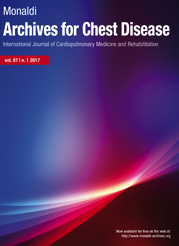Peripheral pulmonary lesion: novel approaches in endoscopic guidance systems and a state-of-the-art review
All claims expressed in this article are solely those of the authors and do not necessarily represent those of their affiliated organizations, or those of the publisher, the editors and the reviewers. Any product that may be evaluated in this article or claim that may be made by its manufacturer is not guaranteed or endorsed by the publisher.
Authors
Diagnosis of peripheral pulmonary lesion (PPL) is the most challenging field in bronchoscopy and interventional pulmonology, which concerns early lung cancer diagnosis. Despite novel techniques and new approaches to the periphery of the lung, almost 25% of PPLs remain undiagnosed. Bronchoscopy with guide systems, virtual and/or electromagnetic navigation, robotic bronchoscopy, and transparenchymal nodule approaches tend to provide a higher percentage of reaching the lesion, but the diagnostic yield rarely exceeds 75%, regardless of the instruments used. Further studies are needed to evaluate what the main constraints of this discrepancy are and if a combined use of these techniques and instruments can provide an increased diagnostic yield.
How to Cite

This work is licensed under a Creative Commons Attribution-NonCommercial 4.0 International License.






